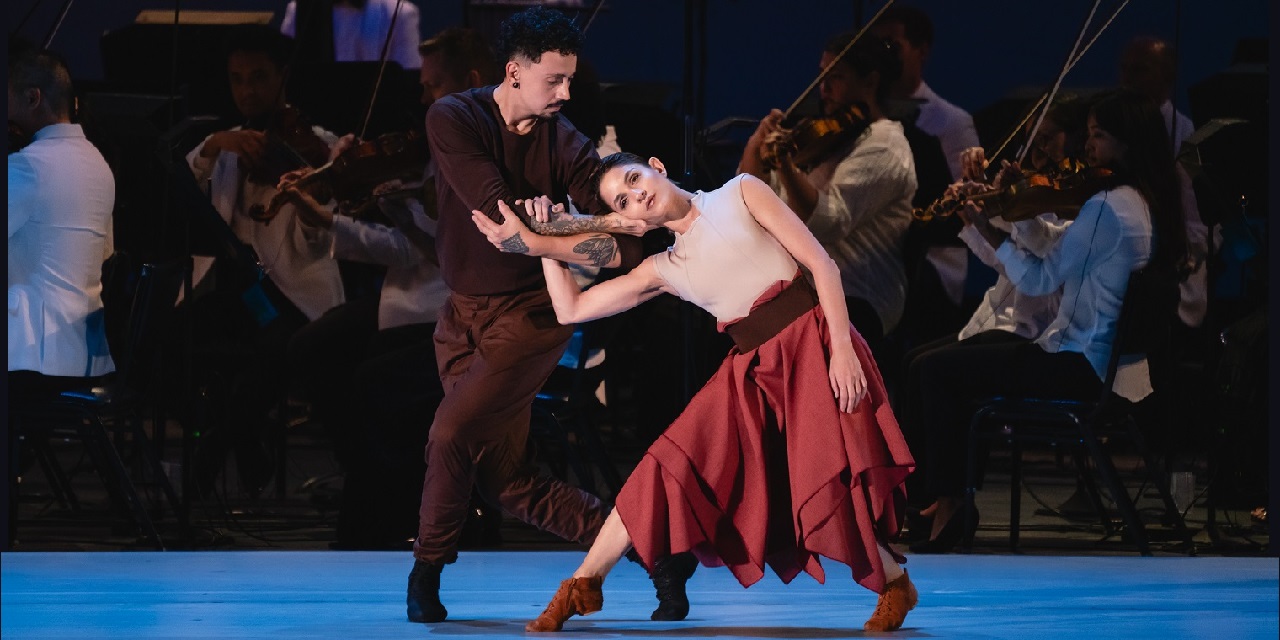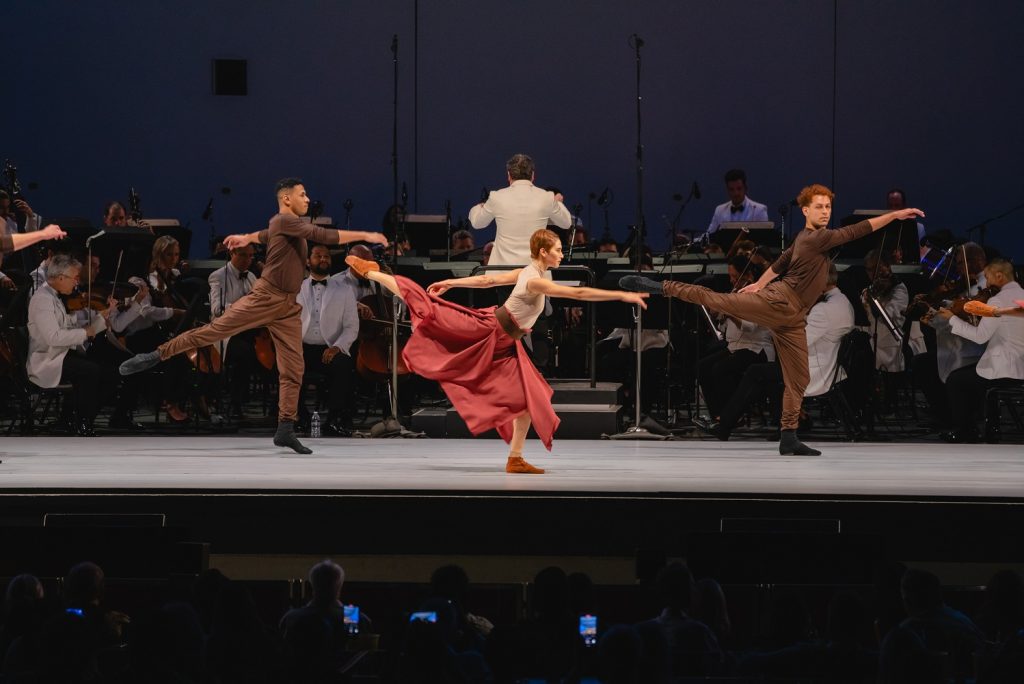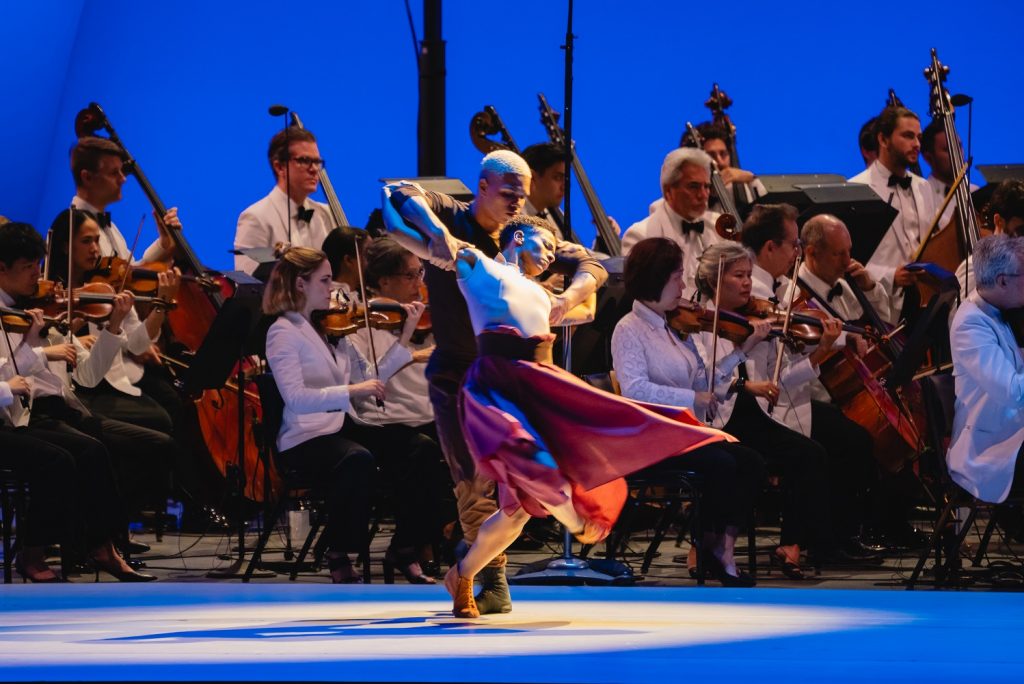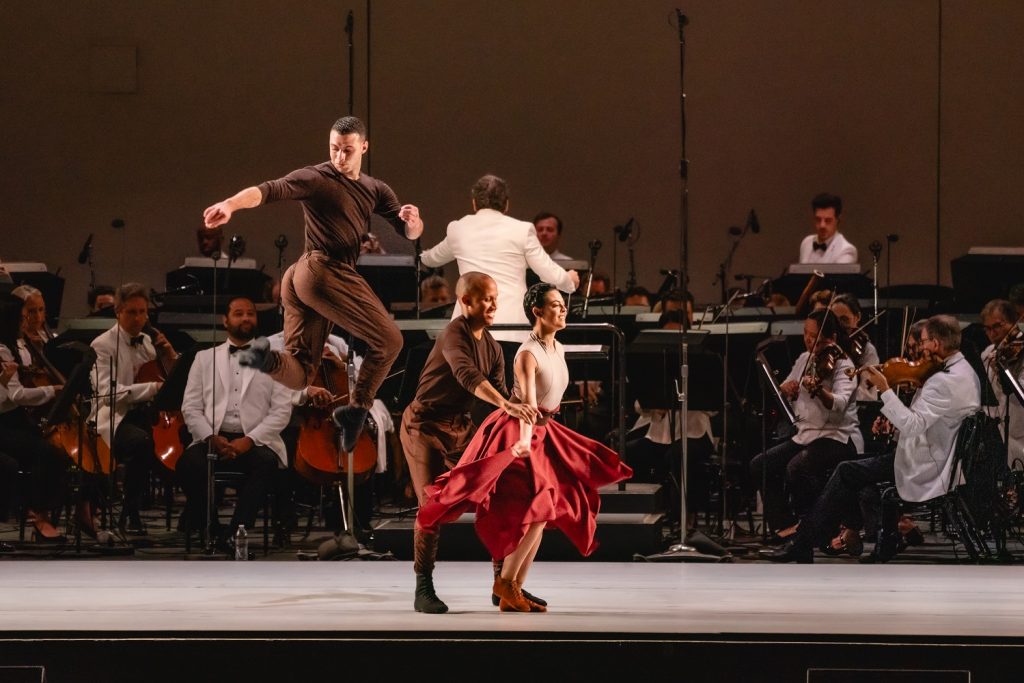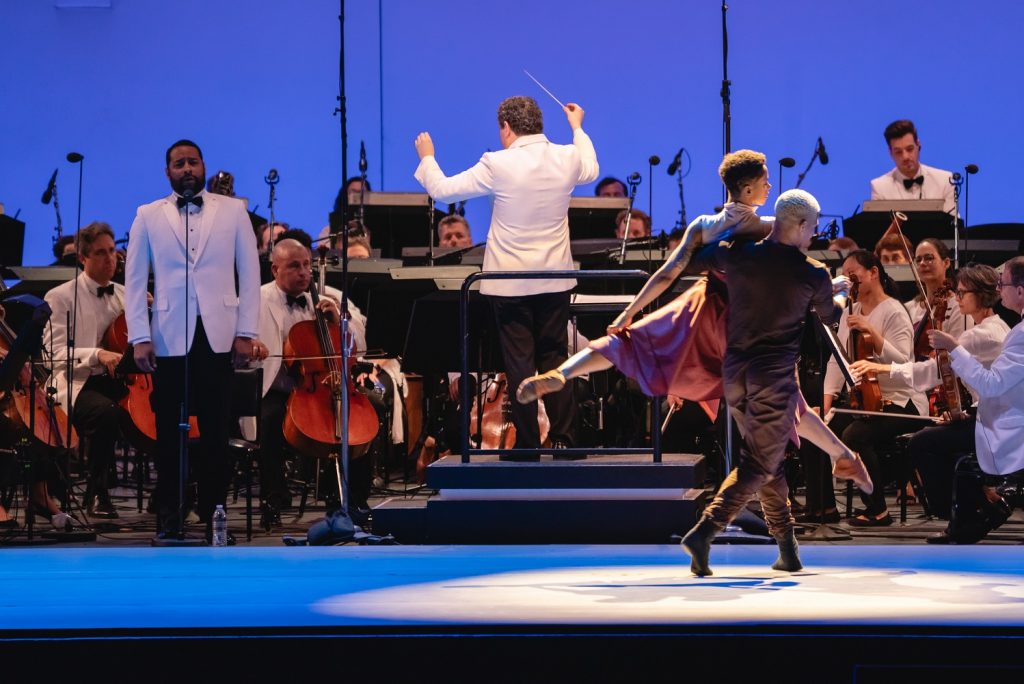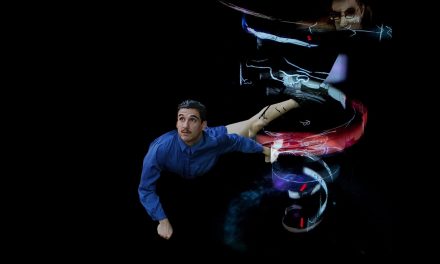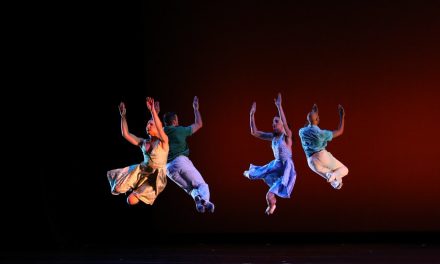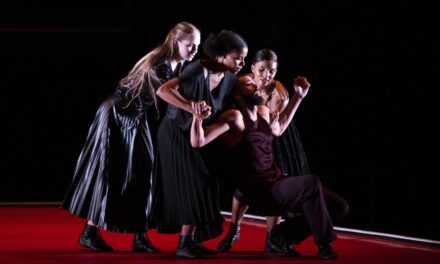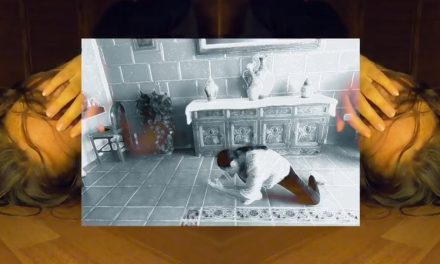It is always a distinct pleasure to visit the Hollywood Bowl and partake of its environs both natural and architectural regardless of who is performing on its hallowed and historical stage. However, the performance Tuesday evening July 18th was a special night displaying the work of three different composers: Francisco Cortés-Alvarez (b.1983), Arturo Márquez (b. 1950), and Alberto Ginastera (1916-1983), all conducted by Gustavo Dudamel with the L.A. Philharmonic. The Brazilian dance company Grupo Corpo also lent their considerable talents to the evening performance of Ginasteras’ ‘Estancia.’ The union of these artists made for a particularly sublime evening of incredible music and fabulous dance.
First on the program was La Serpiente de Colores, an L.A. Philharmonic Association Commission composed by Francisco Cortés-Alvarez and written with the support of the Sistema Nacional de Creadores, FONCA. This is a marvelous composition based on a Mexican legend about a multi-colored snake with a spring in its tail that would spread joy wherever it went by leaving behind water for flowers, trees and crops. Sure enough, the people began to fight over these resources left by the snake, and it became scared and burrowed underground for safety from the humans. When humans learn to live in harmony and love each other the snake shall return (Cortés- Álvarez). This piece was full of loping rhythms and surprises with heavy dramatic percussion signifying the movement of the snake. One could feel its passing while sitting in the audience. This was a delightful, creative romp well worth taking.
Second on the program was the Concierto de Otoño composed by Arturo Márquez. This was nothing short of a revelation. His music incorporates forms and styles from his native Mexico. He is known for his danzones, orchestral interpretations of an old salon dance from Cuba that became popular in Veracruz and then in Mexico City (Henken). Márquez has featured the trumpet in his Concerto for a specific reason: ‘The trumpet is the queen in the heart of Mexico. We find it in practically every form of popular musical expression; it is the Mexican cry of joy and of sorrow. It is also foundational in Latin American concert music, and my Concierto de Otoño is a compilation of all those feelings’ (Márquez). This Concerto was written expressly for the superb Venezuelan trumpeter Pacho Flores who also gave the premiere performance in September 2018 with the National Symphony Orchestra of Mexico. Flores skill with the trumpet is sublime. His playing absolutely did cry out in joy and sorrow and brought forth tears to accompany said emotions. To see a musician of that caliber deliver such an astoundingly difficult concerto moves one from the mundane to the realm of the spiritual. His dexterity was only surpassed by his breath control, which was a marvel to behold.
Third on the program was Estancia composed by Alberto Ginastera, who was joined by Baritone Gustavo Castillo and the Grupo Corpo of Brazil. Many of Ginastera’s works were inspired by the Gauchesco tradition. This tradition holds that the gaucho, or landless native horseman of the plains, is a symbol of Argentina. The plot and scenes of the piece were derived from the poem ‘Martin Fierro,’ by José Hernández written in the 1870s.
This piece has five sections outlining a day in the life of a gaucho; ‘Dawn,’ ‘Morning,’ ‘Afternoon,’ ‘Night’ and ‘Dawn’ again. We are treated to the very capable dancers all whirling and stamping and then a number of duets with beautiful lift sequences and gorgeous partnering proclaiming the passion of the gaucho for his girl. The choreography, though captivating enough through variations on a theme and well-developed pas-de-deux, does not follow the story line of the poem. The story is abstracted through group movement. Whether it be the section of the ‘Dawn,’ the ‘Wheat Dance,’ the ‘Land Workers,’ or the ‘Ranch Hands’ there was little in the choreography to differentiate between these groups of people or the gaucho’s interaction with them. The sections whiz by as there is a lot to take in with the orchestra playing and Dudamel conducting and Castillo singing, and the dancers flying through the space at breakneck speed all stomping and kicking in a malimbe-like finale. And then it was over, too soon.
Grupo Corpo has excellent dancers that can deliver complicated Folk Dance as well as Classical Ballet often in the same phrase of movement. They were inspiring to watch. Grupo Corpo is Paulo Pederneiras as Artistic Director/Lighting Designer, Rodrigo Pederneiras as Choreographer, Gabriel Pederneiras as Lighting Designer, and Freusa Zechmeister as Costume Designer.
The Dancers: Ágatha Faro, Bianca Victal, Davi Gabriel, Dayanne Amaral, Débora Roots, Edésio Nunes, Giulia Madureira, Isabella Accorsi, Jõnatas Itaparica, Jonathan de Paula, Karen Rangel,Luan Barcelos, Luan Batista, Lucas Saraiva, Malu Figueirõa, Rafael Bittar, Rafaela Fernandes, Tris Martuns, Vitõria Lopes, Walleyson Malaquias, Yasmin Almeida.
We look forward to this wonderful company returning to Los Angeles.
For more information about Grupo Corpo, please visit their website.
To learn more about the L.A. Philharmonic, please visit their website.
To learn more about the Hollywood Bowl, please visit their website.
Written by Brian Fretté for LA Dance Chronicle.
Featured image: Groupo Corpo with LA Philharmonic at The Hollywood Bowl – Photo by Farah Sosa

